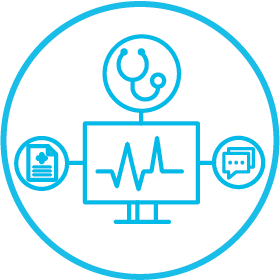 Today, Americans manage much of their lives through digital and electronic tools, except when it comes to healthcare. According to a new Nielsen survey released this week by the Council of Accountable Physician Practices and the Bipartisan Policy Center reveals a majority of Americans are unaware of or don’t have access to the digital health tools they could use to communicate with their doctors for better quality health care. Digital health tools could save primary care $10 billion annually, according to a recent report by Accenture.
Today, Americans manage much of their lives through digital and electronic tools, except when it comes to healthcare. According to a new Nielsen survey released this week by the Council of Accountable Physician Practices and the Bipartisan Policy Center reveals a majority of Americans are unaware of or don’t have access to the digital health tools they could use to communicate with their doctors for better quality health care. Digital health tools could save primary care $10 billion annually, according to a recent report by Accenture.
“Having ready access to a doctor is vital to high quality healthcare. Yet the busy schedules of consumers and physicians alike often prevent timely attention to routine and urgent healthcare problems in the traditional 9 to 5 physician office visit options. Digital technologies can help overcome the barriers to accessing medical care, yet our survey shows that these tools are not available to most Americans,” said Robert Pearl, M.D., Chairman of the Council of Accountable Physician Practices and CEO of The Permanente Medical Group and the Mid-Atlantic Permanente Medical Group. “Healthcare providers must step up our adoption of these common-sense and available solutions if we are truly going to reform healthcare delivery.”
4 Consumer Groups Most Interested in Access to Digital Health Tools
The report identified four consumers who were most interested in gaining greater access to their doctor through digital health tools (e.g. patient portals, mobile apps/wearables, telehealth):
1. Parents with children covered under health plans
2. Chronically ill patients
3. Patients with acute conditions
4. Adults under 35 years of age
Only 2% Patients Have Access to Telhealth Visits
All Forms of Provider Interaction Low
Overall, the report finds that all forms of provider interaction generally low with technology-enabled communications increasing slowly:
– Less than half – 45 percent – receive even the traditional telephone appointment reminders.
– Only 1 in 5 – 21 percent – have access to online appointment scheduling with their doctors.
– Fifteen percent use email to communicate with their provider.
– Just 14 percent have 24/7 access to medical advice.
– Fewer than 1 in 10– 9 percent – receive reminders by text.
– Only a small percentage – 3 percent – are able to send a photo of a medical condition over email
– 3 in ten are receiving electronic reminders from their healthcare providers
Telemedicine Options Inaccessible to the Average Patient
“Virtual care” innovations, such as telemedicine, were found to be almost completely inaccessible to the average patient in the report:
– 11 percent received online submission of questions answered by a medical professional
– Only 2 percent of patients have access to telehealth visit
– 6 percent received email reminders about taking medications and/or other health measurements
– 4 percent Text reminders about taking medications and/or taking other health measurements
“These findings emphasize how few patients and providers are actually using the technologies that we use in most other aspects of our daily lives,” said Janet Marchibroda, Director of Health Innovation at the Bipartisan Policy Center in an official statement. “A lack of appropriate incentives as well as regulatory and legislative barriers have prevented many healthcare providers’ from implementing these technologies. Yet as healthcare organizations are increasingly responsible for improving the health of large populations, they must rely more on efficient, technology-driven patient-physician relationships to achieve performance goals. That means society must create incentives that facilitate adoption of these tools and technologies.”
Survey Background/Methodology
The survey, conducted by Nielsen Strategic Health Perspectives, polled more than 5,000 Americans ages 18 and over between June 29‐July 13, 2015, and looked at attitudes about and use of technology to inform, access and manage their medical care. Nielsen also conducted an online, quantitative survey of US physicians between June 3‐23, 2015. We surveyed 626 US physicians across specialties and primary care. Figures for years in practice, sex, and region were weighted where necessary to bring them into line with their actual proportions in the physician population.
For more information about this report, download the PDF

